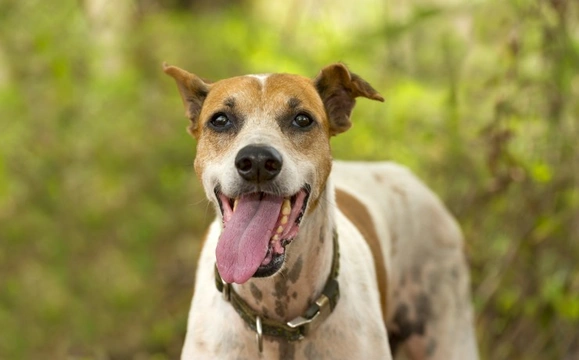
Why do dogs pant?
When you walk your dog, he or she probably spends most of the time you’re out trotting around with their mouth open and tongue hanging out panting, in between periods of running to catch a ball or play!
Panting is such a common and universal canine behaviour that often, it is not something that we give a lot of thought to-but the reasons behind why dogs pant are as numerous as they are interesting, and learning to understand the basics of why dogs pant and the roles that it fulfils can help you to develop a better understanding of both your own dog, and dogs as a whole.
In this article, we will answer the question of “why do dogs pant?” in detail. Read on to learn more.
Humans and dogs
In order to understand why dogs pant, it is first of all necessary to understand how dogs and people differ, and the implications that this has for the other differences between us in terms of physiology and behaviour.
While dogs and humans actually have more in common than we do different in the wider scheme of things as we are both mammals, on a day to day basis, dogs and people are of course very different, because we are not the same species!
Humans too will pant if we have been exerting ourselves hard and need to breathe deeply, and in some other situations too, such as during a panic attack or asthma attack. However, panting in humans is not an everyday behaviour that we exhibit as normal, and this comes back to the basic differences between us and dogs.
To stay cool
When people get too hot, we do various different things to help to cool ourselves down, such as taking off layers of clothing, staying in the shade, keeping still, drinking a cool drink, and using fans or other devices to try to get some fresh air. However, the main way in which humans regulate their body temperatures during the hot weather is by sweating, a natural involuntary reaction to an increased body temperature.
Dogs, on the other hand, cannot remove their fur coats and so this is one way in which we differ when it comes to staying cool-dogs do not have that option, and so must try to cool themselves down in other ways, such as by panting.
No sweat!
As mentioned, sweating is one of the key ways in which people are able to regulate their body temperature and stay cool, and this natural sweating is a vital part of keeping our body temperatures within safe norms when we are too hot.
However, dogs do not sweat like people-dogs only sweat through their noses and the pads of their paws, and then only a limited amount, and so this is another way in which dogs lack a method to cool down that we as people take for granted.
The tongue of the dog, on the other hand, is a large internal surface area that can be exposed by panting, and panting in order to produce a lot of cooler airflow over the tongue helps to cool down the dog’s entire body, much as how running cool water over your wrists can help to cool a person down, due to the veins being so close to the surface.
If afraid
There are other situations in which dogs might pant as well, outside of the everyday need to stay cool-such as if the dog is anxious or afraid. This is why many people will observe their dogs panting during a thunderstorm or fireworks display if these things make the dog anxious, because just as can happen when people are scared or anxious, the breathing becomes shallower and more rapid as part of the body’s fight or flight responses gearing up for action.
Nausea
A dog that is either feeling sick or about to be sick might pant too, as rapid, shallow breathing can be triggered by the same feeling that leads to the expulsion of food from the stomach. Taking a deep breath when the stomach is in result may lead to vomiting, and as dogs will often try to avoid vomiting if they get the choice, they perceive that faster, shallower breathing is the better option.
Respiratory problems
If your dog suffers from an issue such as asthma, an upper respiratory tract infection or brachycephalic syndrome, their anatomy or issue may make it hard for them to get enough air, which can lead to panting and rapid, shallow breathing in a range of situations, such as during only light exercise or any time that the weather gets too hot.
Conditions such as asthma or infections do of course need to be treated and/or brought under control, and special care should be taken of brachycephalic dogs to ensure that they do not overheat during the hotter months of the year.



